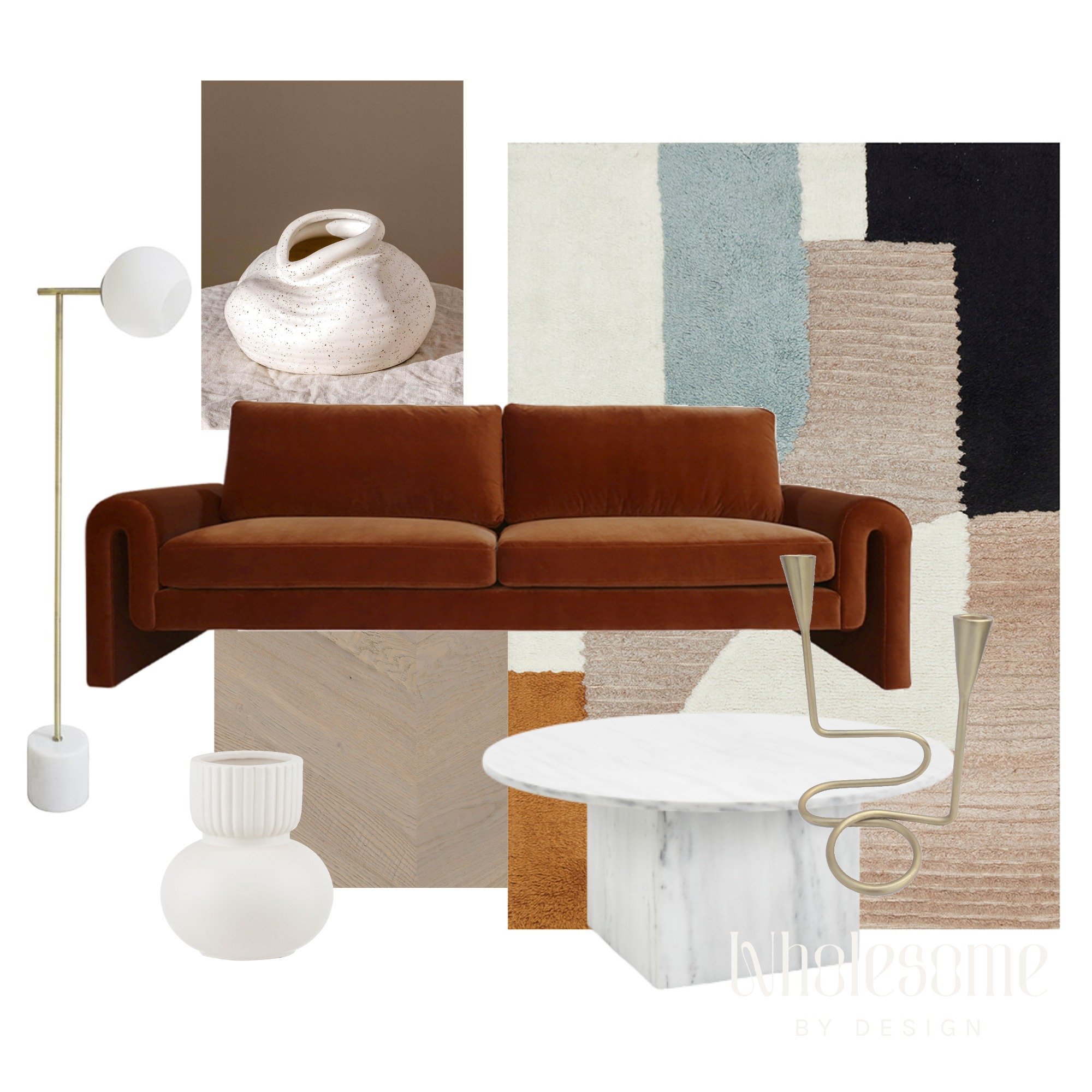How mood boards help the interior design process
Mood boards and selection boards are two design tools commonly used by interior designers as part of the interior design process. They’re both super valuable for professional designers and design enthusiasts alike, but have slightly different purposes.
So, what’s the difference between a mood board and a selection board?
1) Mood boards
Used as part of the initial concept stage of interior design, mood boards provide a visual representation of the potential design direction for an interior project. They collate a range of reference images that help you narrow down your ideas and decide on the aesthetic for your interior space.
This might include:
Photos of completed interior spaces that inspire you. These could be from Pinterest, Instagram, design books and magazines, design blogs or even pics you’ve taken of places you’ve been that you love.
Artwork or photography.
Furniture and decor items that you like.
Images of textures and materials that catch your eye.
Above: example of a mood board for a Victorian-style townhouse renovation
2) selection boards
Selection boards on the other hand are used in the design development phase of the design process. Rather than providing a style guide to steer the general design, the selection board provides a visual representation of how the space will actually look upon completion. Using the mood board and design brief as a guide, concept boards feature the specific items chosen for your space.
Above: example of a selection board for a contemporary living room
The downsides of not having a mood board or selection board
With so many options available out there, decision making can be overwhelming. You don’t know how to narrow down your ideas and make it into something tangible.
You’re flying blind. You make decisions and purchase items in isolation without considering the overall look. The items arrive at home and you realise that the new armchair you bought doesn’t work with furniture you already have. The size and proportions are wrong or the style of the item looks out of place.
The outcome is underwhelming. You may have matched items together roughly in your mind, but it falls flat once it’s all pulled together. The space can feel same-same and uninspiring to be in.
You may not feel confident in your design choices, and avoid moving forward in your project altogether.
Money is wasted buying the wrong things, which can lead to you replacing items more frequently. Not only does this cost you even more money over time, but it also has a negative environmental impact too.
With a solid plan in place using a mood board and final selection board however, these mishaps can be avoided.
The benefits of having a mood board and selection board
They provide clarity
Mood boards help you to find patterns in your inspirational images and get clarity on your likes and dislikes. Once you have some of your top images together, you can start to identify the elements that feature across multiple reference pics to help you make design choices. For example, you may be looking to update your master bedroom and have lots of images saved featuring striped bed linen, timber bedside tables with drawers, mismatched lamps and sheer curtains. Understanding where the repetition comes in through your mood board imagery helps you to better understand your own personal style, without needing to put a label on it. The images do the talking.
You can experiment with ideas before implementing them
They allow you to experiment, which can lead to unexpected results. This can be a bit of trial and error, but creating different visual combinations can lead to creative ideas and outcomes you may not have expected. You can see if the design is looking flat or lacklustre, or if it’s chaotic and clashing (and not in a good way!) so you can refine as needed. It’s a great way to play with paired back or bolder features. The results may surprise you.
You’ll feel more confident in your choices, and avoid wasting money
Mood boards and selection boards give you confidence that your design choices will work before you spend your precious cash. Furnishing your home or workplace can be a big investment. Taking some extra time upfront to come up with a plan can help you to avoid costly mistakes that you could come to regret down the road.
Do you need help pulling together your vision and understanding the design direction you should take for your space? A design consultation may be helpful for you. 

